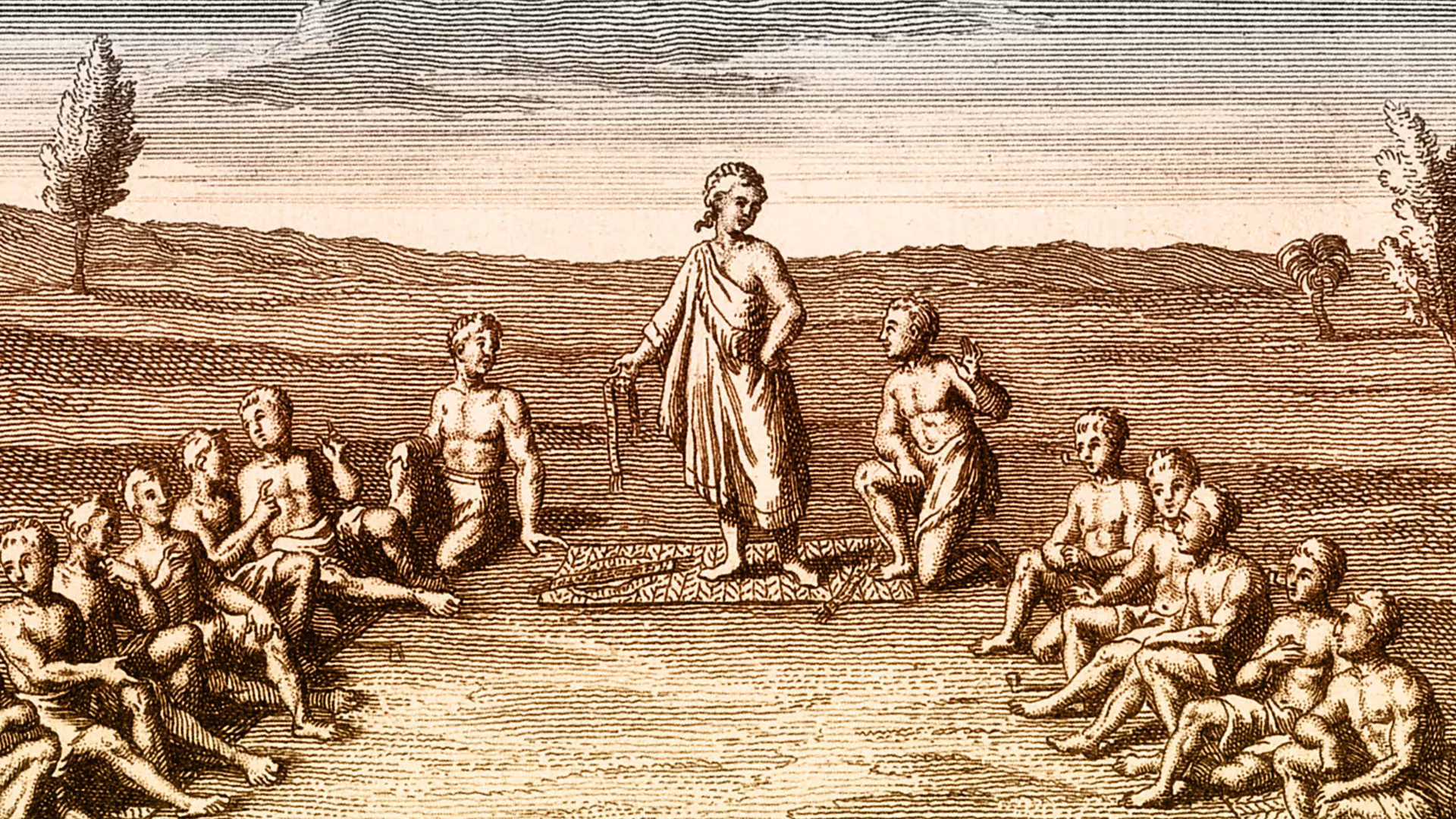The Haudenosaunee Confederacy: Indigenous Roots of American Democracy

The Haudenosaunee Confederacy, also known as the Iroquois Confederacy, formed in 1142 and united six Indigenous nations under a constitution called the Great Law of Peace.
The Dive
Let’s set the record straight, if you’ve only heard that America’s democracy came from ancient Greece or Enlightenment Europe, you’re missing a huge part of the truth. Over 600 years before the U.S. Constitution was signed, the Haudenosaunee (Iroquois) Confederacy created a government rooted in balance, unity, and peace. Their system included checks and balances, a council of nations, and even term limits—sound familiar?
Who were the Haudenosaunee? They were (and still are) a powerful union of six nations: the Mohawk, Oneida, Onondaga, Cayuga, Seneca, and later the Tuscarora. Together, they lived by the Great Law of Peace, a constitution passed down through oral tradition and woven into a sacred Wampum belt. It united formerly warring tribes into a cooperative system guided by consensus, mutual respect, and balance of power.
And here’s the wild part: Benjamin Franklin and other founders saw it firsthand. Franklin sat in treaty councils with Haudenosaunee leaders like Chief Canassatego. In fact, it was Canassatego who advised the colonies to unite, comparing the strength of a single arrow to a bundle of arrows. That metaphor lives on, literally, in the Great Seal of the United States: an eagle clutching 13 arrows.
The Haudenosaunee Grand Council divided into 'Elder Brothers' and 'Younger Brothers', a structure echoed in our Senate and House of Representatives. Clan Mothers selected leaders and could remove them—an early example of checks and balances, like impeachment. The idea of limiting someone from holding more than one office? Also Haudenosaunee.
While Native influence helped shape the U.S. Constitution, Native Americans were among the last to gain full voting rights, granted by the Snyder Act of 1924, nearly 140 years after the Constitution was ratified. The builders of democracy were denied a voice in it.
History is often written by the winners, and Indigenous contributions have too often been erased. But the truth is, the world’s oldest continuous democracy isn’t Athens. It’s Haudenosaunee. And it still exists today.
As Onondaga Faithkeeper Oren Lyons said, 'What Indians are about, first of all, is community. They’re about mutual support… about understanding what’s common—land, air, water—for all.'
Democracy isn’t just a document. It’s a way of life. The Haudenosaunee understood that peace and unity take work, trust, and shared responsibility. Maybe it’s time we gave credit where credit is long overdue—and learned a thing or two about the kind of democracy they practiced long before 1776.
Why It Matters
The Haudenosaunee Confederacy gave the world a living model of democracy based on peace, shared leadership, and mutual respect. Acknowledging their influence challenges the myth that democracy is only a Western invention and highlights the deep Indigenous roots of American political ideals. In a time when democracy feels fragile, looking back to its oldest practitioners may help us strengthen it.
?
What parts of the Haudenosaunee government were most similar to the U.S. Constitution?
Why do you think Indigenous influence on democracy has been historically overlooked?
How might our understanding of American history change if we centered more Indigenous perspectives?
What lessons can we learn from the Great Law of Peace today?
If you were designing a government based on Indigenous values, what would be most important to you?
Dig Deeper
We’re often taught that it was the ancient Greeks who invented our democracy. What they forget to mention is the group of Native Americans who helped showed us the way.
The Hiawatha wampum belt tells the story of the Haudenosaunee’s legendary founding and wampum’s power to heal. It tells of a warrior named Hiawatha who meets a prophet known as the Peacemaker.
Related

Democracy: Government by the People
Democracy is more than voting every few years. It is a way of sharing power, protecting rights, and making sure ordinary people have a real voice in how they are governed.

Separation of Powers
The U.S. Constitution divides power among three branches—legislative, executive, and judicial—to prevent tyranny and keep government balanced.

Basic Rights and Personal Responsibilities
Rights give us freedom. Responsibilities protect those freedoms—for ourselves and for each other.
Further Reading
Stay curious!
